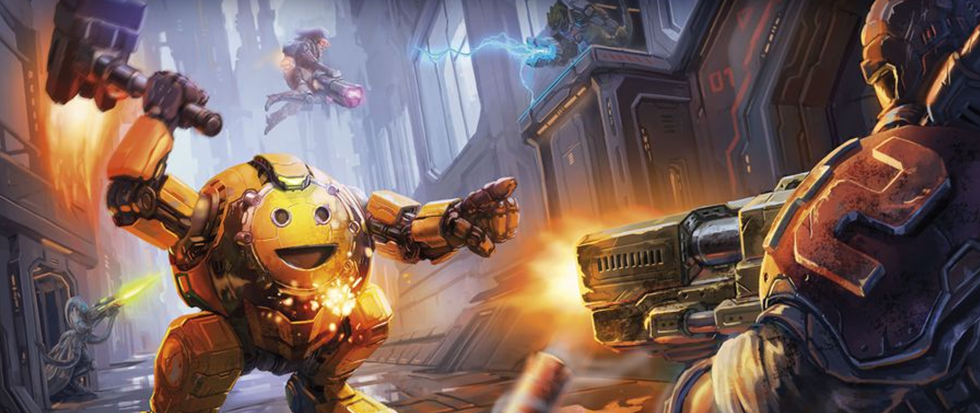
Between Two Worlds
You probably noticed by now, but a lot of video game fans also like board games, and that’s become more and more true by the day. The same can be said of designers, and it’s no surprise that some influence between the two carries over. Just as you can clearly see the tabletop influence in games like XCOM or Civilization, so too are we seeing board games that are clearly designed with video games in mind. Now we’re faced with games that try to port over a video game experience to the table to varying degrees of success. But Adrenaline is the best of the bunch, and it accomplishes this by remembering it’s a board game first.
Adrenaline immediately captures your imagination by billing itself as a first-person shooter board game, which in itself seems difficult to pull off. But Adrenaline manages to bring the feel of old-school deathmatch to the table by shrinking the playing field. Adrenaline’s board is small and cramped, meaning you’re always a couple of steps away from your opponents. You get points for kills, but also for having the most amount of hits on someone when they die. This encourages aggressive play, so you’re almost always shooting someone every turn. Adrenaline manages to feel like it matches the frenetic pace of a game like DOOM even as your turns still take the same amount of time as a normal board game. You’re trapped in a killbox, after all.
But the best part of Adrenaline is the huge array of weapons it gives you and how well they survive the transition from video games to cards. Each one carries with it a base ability as well as additional ones should you pump more of the right kind of ammo into it. A wide variety of weapons is the heart and soul of a first-person shooter, and Adrenaline absolutely nails the full range of options, including the machine gun, sniper rifle, and melee weapons like the sword and chainsaw.
What makes Adrenaline work, though, is the fact that it embraces that it is ultimately a board game. The ammunition system, where you have three different colors of cubes representing different kinds of ammo, is good old fashioned board game resource management, and is what keeps Adrenaline tethered to the tabletop instead of flying into nonsense. You only get to reload at the end of your turn, which means you’re always planning out how to both shoot someone and grab ammo in the same turn. You want to be as efficient as you can be, but at the same time you need to cause damage as fast as possible, because a game of Adrenaline doesn’t last long.
This layer of strategy captures a moment in deathmatch in a minute of a board game turn. In a deathmatch, you’re always pathfinding, by which I mean you’re constantly making snap decisions on what path you’re going to take through the maps. Once you’ve learned a level, you’re going to map out a path through spots where a lot of people are going to be while ducking out of the way right as you run low on ammo, going through ammo spawns in the process. Adrenaline captures these moments in every single one of its turns, and it does so without betraying its tabletop nature.
The media might be different, but Adrenaline shows that these ideas aren’t as isolated as they might appear. And the more these two world intermingle, the more the potential of both will unfold.





